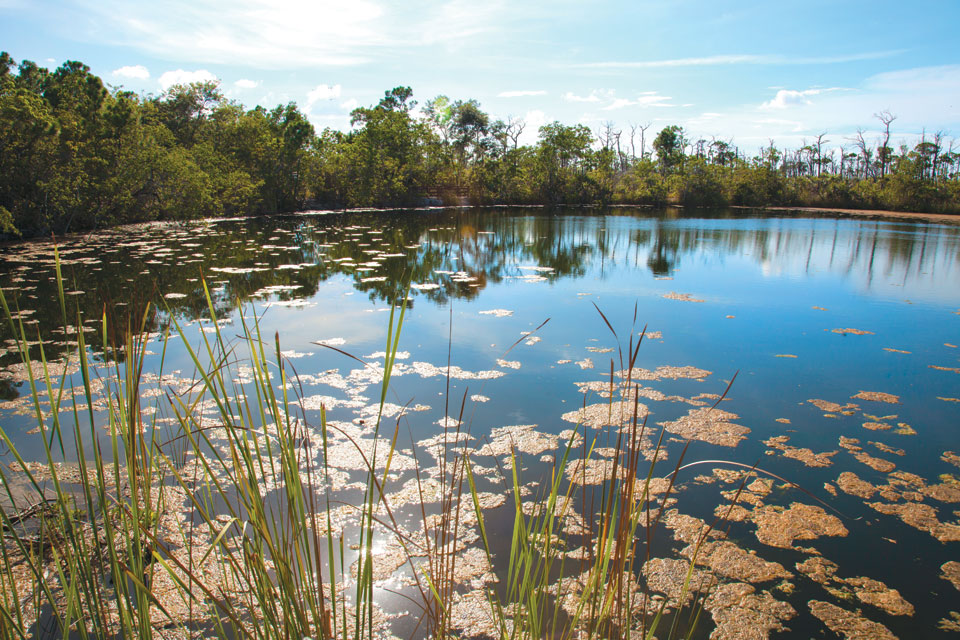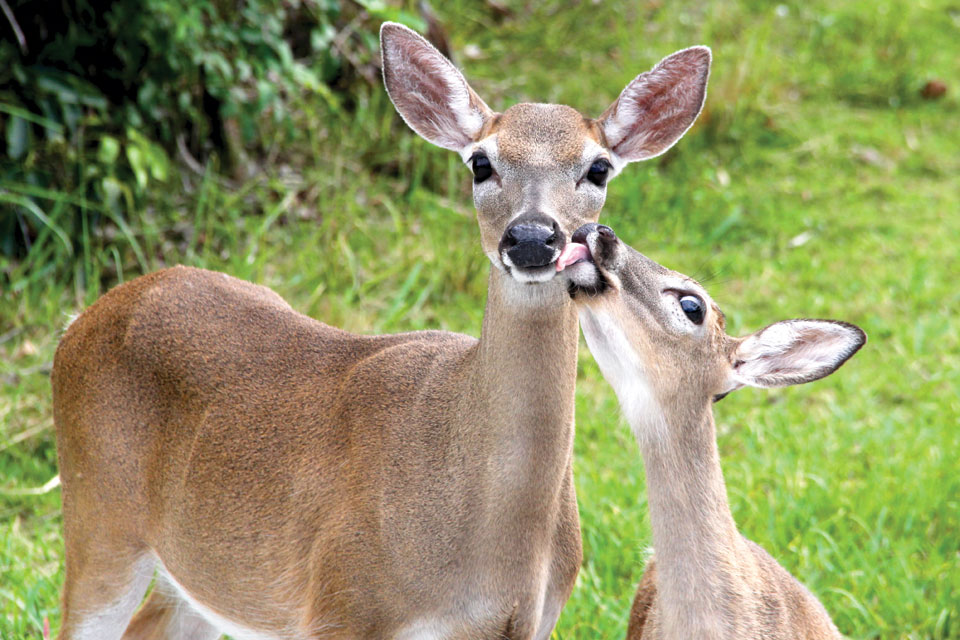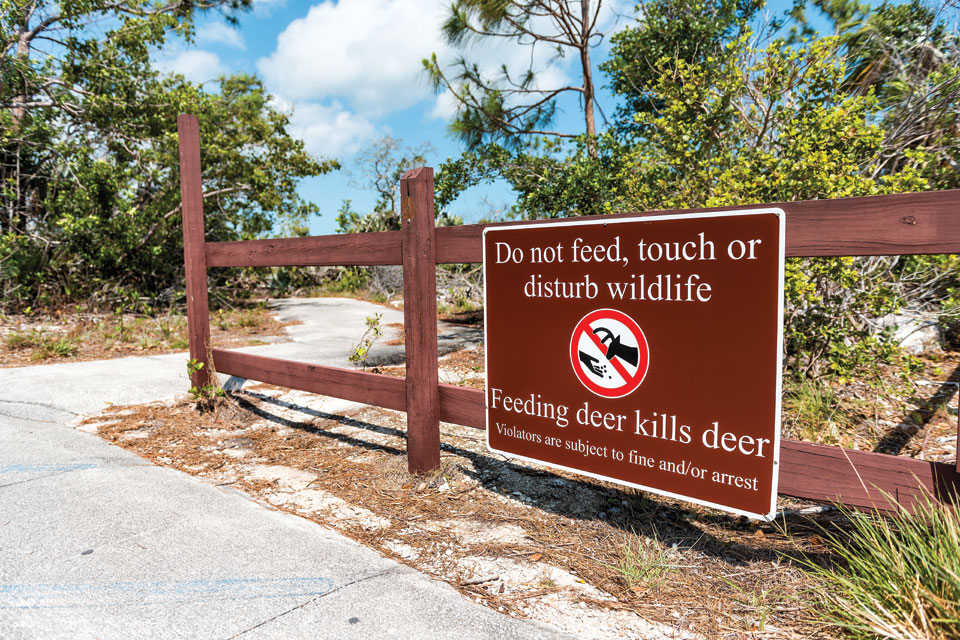
Federal Status
Native to the Florida Keys, key deer are found no other place in the world except for a few small islands known as “keys” located at the southern base of the Florida state peninsula.
The deer are a sub-species of the North American white-tailed deer, and are the smallest deer on the continent. Like other white-tailed deer, they are typically reddish-brown or grayish-brown in color. Males grow antlers and adult males, or bucks, weigh 55 to 75 pounds. Adult females, or does, weigh slightly less. On average, the deer stand only about 24 to 32 inches at the shoulder.
The breeding season takes place in the fall and early winter. Most mating occurs in October. Pregnancy is about seven months with most fawns born between April and June. Fawns are tiny – only two to four pounds at birth. Most does have one fawn per year.
The males drop their antlers in February and March. Their new antlers start to grow immediately. During courtship, males become very aggressive with other males that are competing for the same female. The two males will charge each other and lock antlers in a fight over the rights to mate with the female. Fighting can be so intense that it can result in the death of one or both deer. The gestation period for the key deer is 200 days. Most males live about three years and females live about six years.



Key deer live in all the types of ecosystems found in the Florida Keys, from pine forests to mangroves and freshwater wetlands. They can swim between islands and move around their habitat in search of freshwater.
Key deer eat more than 150 species of plants. The most important part of their diet is mangrove trees and thatch palm berries. Due to their lack of fear of humans, some of the animals have been known to eat plants in people’s gardens. Feeding key deer makes the deer more vulnerable to dog attacks or getting entangled in fences. It also brings them closer to roads where they can be hit by cars.
The current key deer population is estimated to be between 700 and 800 deer, with the greatest concentrations on Big Pine Key and No Name Key. While its population is considered stable for now, the key deer remains listed as a federally endangered species.
Historically key deer numbers fell to less than 50 in the 1940s. Hunting and habitat destruction led to their near disappearance. Establishment of the National Key Deer Refuge in 1957 helped this Florida-only subspecies survive. Other important steps in its conservation were adding fencing along roadways, imposing stricter speed limits, and stepping up law enforcement.
Threats to key deer include habitat loss from development of coastal habitats and flood-plains, car accidents, disease, illegal feeding by humans, and climate change, which is affecting the mangroves.
One of the biggest challenges for their survival is the possible loss of protective and endangered species status under the federal government under the Endangered Species Act. De-listing removes a species entirely from all federal protections.
State and federal leaders still have a chance to prevent the de-listing of the key deer by the United States Fish and Wildlife Service (USFWS), but people must actively unite and share their voices to protect the deer.
As Floridians we need to make sure our voices are heard loud and effectively to protect this precious species.
